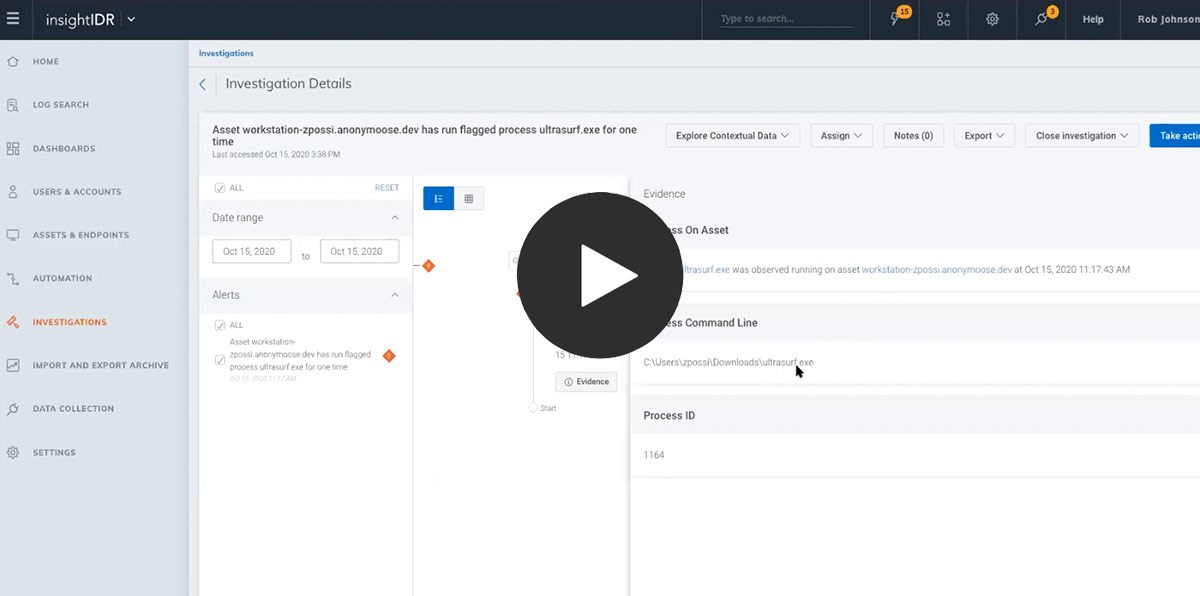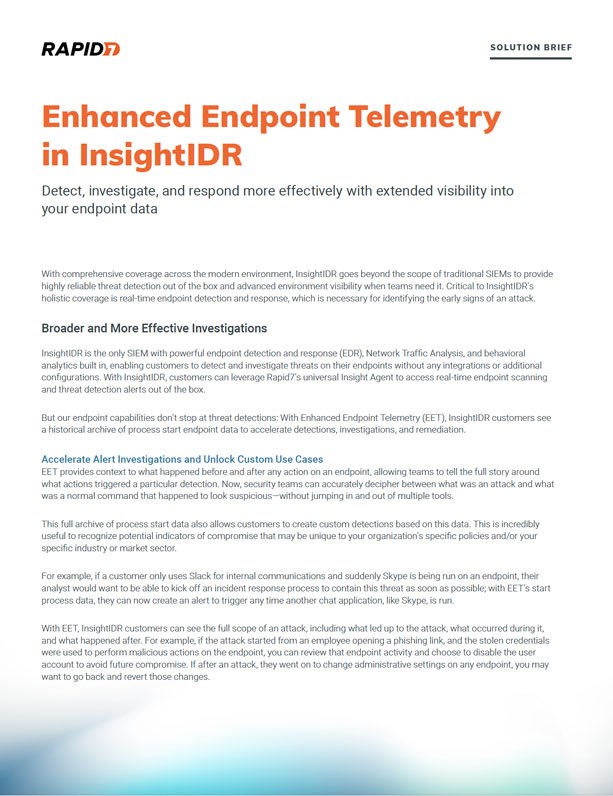- Home
- Products
- InsightIDR
- Features
- Endpoint Detection and Response
insightIDR Feature
Endpoint Detection and Response (EDR)
When it gets this good, you swap the E for an X
Traditional SIEMs were built to ingest massive amounts of log data and provide security teams with analytics capabilities. Figuring out where the bad guys were and what to do was typically up to you. From the start, we took a detections-first approach with the Insight Agent that drives reliable endpoint threat detection and spots attacks early. While many Endpoint Detection and Response (EDR) tools became shelfware, we captured critical data and added relevant context to alerts. Security teams have endpoint coverage they can trust and act on faster.

Identify and prioritize risk
Let’s start with what’s in the box. Many vendors promising XDR outcomes are assuming you’ll integrate (and pay for) the many other technologies you’ll need for the complete telemetry set and extended environment visibility. Endpoint agents. Network sensors. Cloud hookups. User behavior analytics. Log ingestion. With Insight XDR, you install the Insight Agent on any asset in the cloud or on-premises. It’s lightweight software that collects data from endpoints across your IT environment. InsightIDR unifies endpoint telemetry along with broader data collection, giving you single-pane-of-glass comprehensive coverage, and reliable threat detection out-of-the-box. Analysts can choose the one with the highest priority, and respond.
Detect earlier in the attack chain
InsightIDR has a unique approach to detection. Here’s what it means for security teams: no more parsing through tons of endpoint logs to find what matters. Endpoint data is correlated with sophisticated User and Entity Behavior Analytics (UEBA) and curated threat intelligence. O You’ll see suspicious activities — local log deletions, privileged escalations — and shut down attacks before any damage is done, without distractions or tab-hopping. Finally, because we “drink our own champagne” with a global MDR SOC, InsightIDR has an expertly vetted user experience and detections library.
